STEM + Beanbags = F U N!
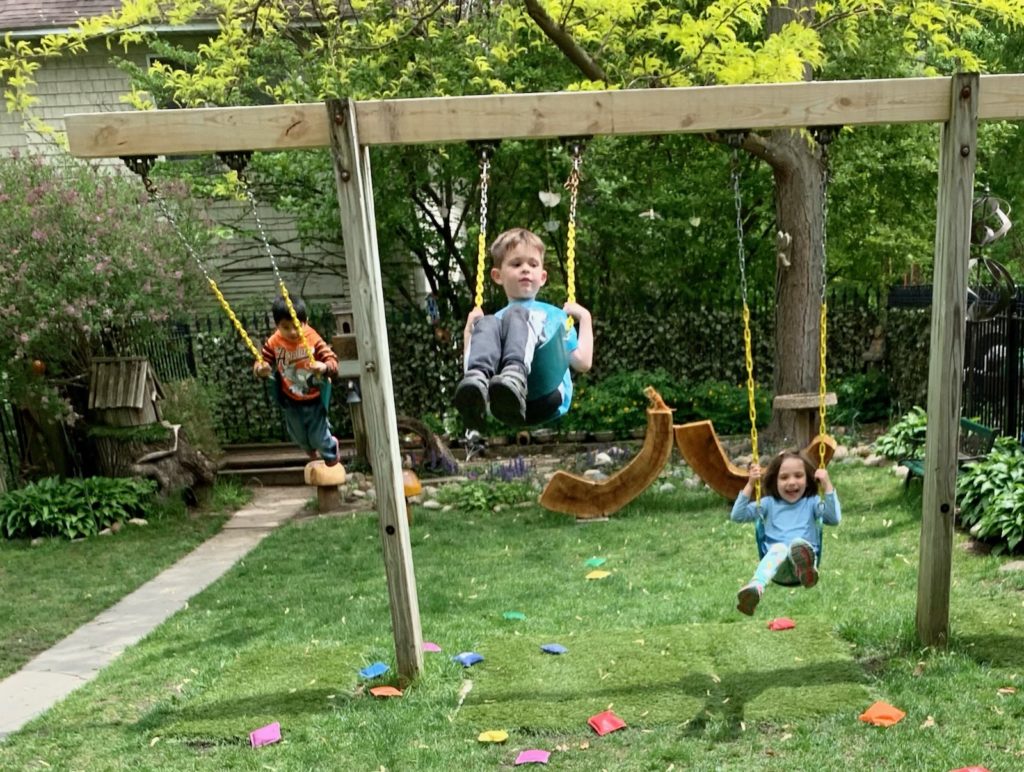
I recently grabbed our dusty box of beanbags off of the top shelf of the closet and took the beanbags outside. We rarely played with them indoors, so what was I saving them for? If a beanbag gets lost or forgotten under the plants and soaked in the rain, who cares? At least it has been played with.
Now that the beanbags have been relocated to our outdoor play space, they have been used daily over the past few weeks. Recently we created a new beanbag game that laid the foundation for later STEM learning.
We currently have a full group of children who can pump on the swings, which is great—unless you have more children than swings, like we do. So I brought out the bucket of beanbags and placed it on the edge of the sidewalk.
Then I picked up a beanbag and gently tossed it in the direction of my swinging friends. The kids loved the idea and it was GAME ON!
Now mind you, the swings were a good 12 feet away from that sidewalk—far enough to ensure that none of the children would be strong enough or accurate enough with their beanbag tosses to actually harm a friend.
“Hit me! Hit me!” hollered the members of the swinging gang.
“I want to play!” shouted the rest of the gang. AYE YAE YAE! What had I started?
What I had started was a new game that quickly became a favorite. No one has been injured, few have been hit and the cooperation and turn-taking is incredible!
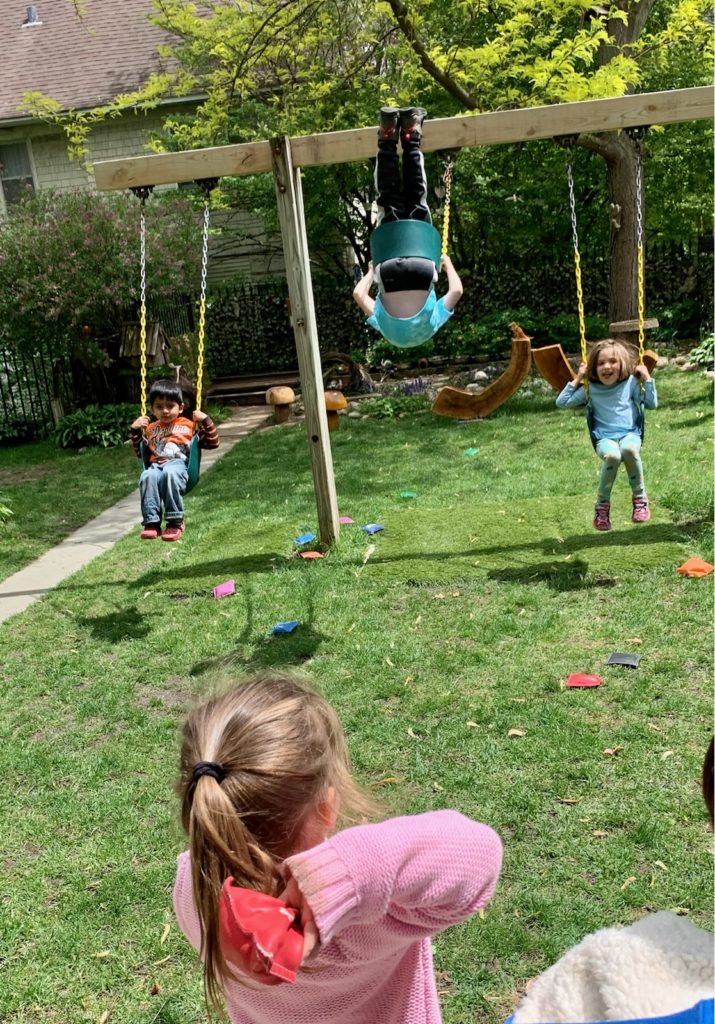
Our rules were simple:
- Throwers had to stay on the sidewalk.
- No creeping up on the swingers.
- Only throw one beanbag at a time.
- When all beanbags have been thrown, yell, “SWITCH!” and the swingers must stop.
When the swingers stopped that first day, there was a mad rush by all to pick up the beanbags and put them back into the basket for the next round. WHAT in the world? I NEVER see this type of energy and enthusiasm during usual pickup times!
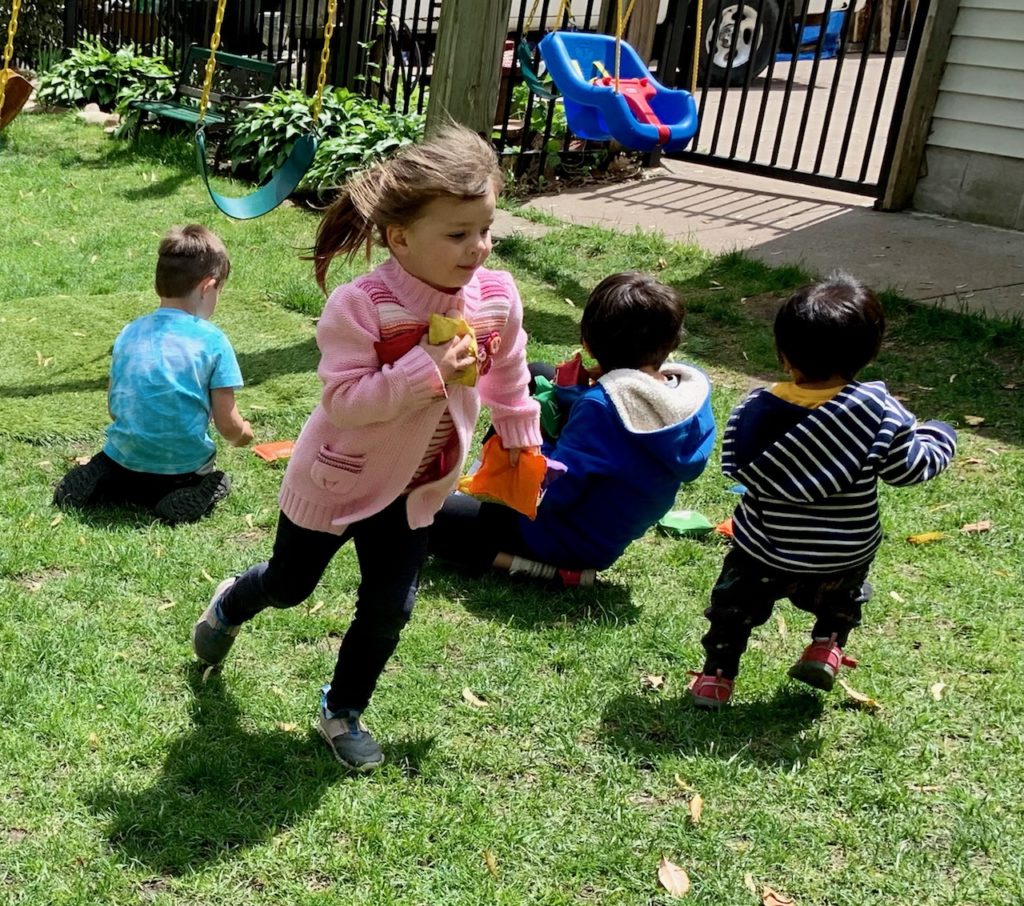
I encouraged the new group of throwers to take a water break to give the new swingers time to get up to speed before the throwers started aiming at their targets. And then we repeated the cycle for a good 20-30 minutes before the children exhausted themselves from all of their throwing and pumping.

We had overhand throwers and underhand throwers. I watched as they tried different techniques and shared theories with each other on the best time to throw the beanbag depending on where the swingers were in the air. This is physics! This is math and geometry and plain old fun!
Investigations into physical science and engineering through this type of play give young children a chance to explore and control physical phenomena and develop a practical understanding of the laws of physics— all while giggling with their moving-target friends.
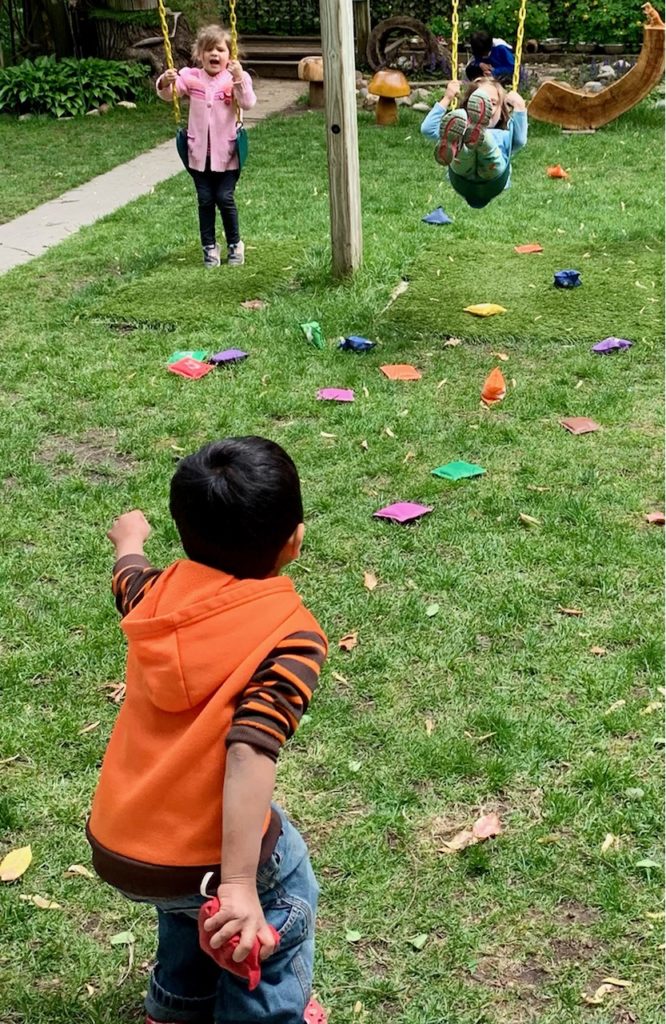
This activity also teaches children about risk-taking and trust building. You trust that your friend won’t hurt you, but you definitely take the risk of possibly getting hit. Scary but fun!
As the game evolved, new ideas were added to the play. Sometimes children called out the number or letter printed on the beanbag or grabbed specific colors. One three-year-old consistently looked only for beanbags labeled with letters that had meaning to him: the first letter of his name or the names of his two siblings. (I later found three beanbags labeled with those letters hidden in a secret corner of the yard. Ha!)
Physically, our beanbag throwers were building up the muscles of their dominant hands, which they will use in future academic settings. They were also working on STEM concepts such as distance, accuracy, speed and force. We throw these wonderful science words into their play to build up their STEM vocabulary and lay the foundation for a deeper understanding of scientific concepts. Meanwhile, our swingers were focusing on the trajectories of the beanbags headed in their direction and making predictions about when and where they would hit, while strengthening their core muscles for future desk and circle time.
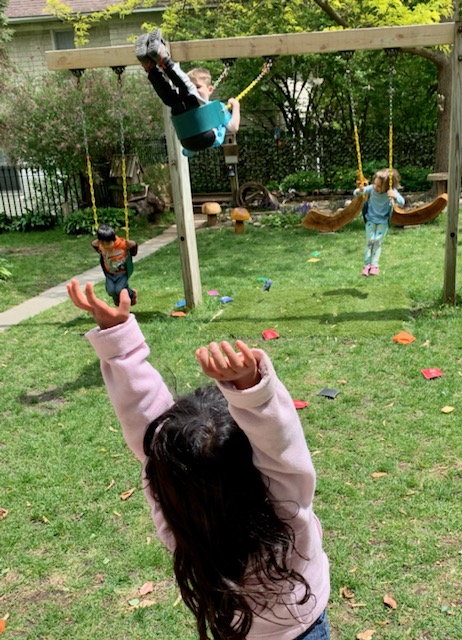
OH, you want learning standards? We’ve got those covered too. We count, subtilize and build our math vocabulary. We measure and estimate distance. We make predictions and modify those predictions based on experience. We use our science skills to explore the physical properties of objects and experiment with force and motion. The list goes on and on and there are so many ways to adapt this game. So grab your beanbags, head outdoors and let the playing and learning begin!